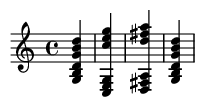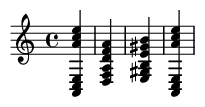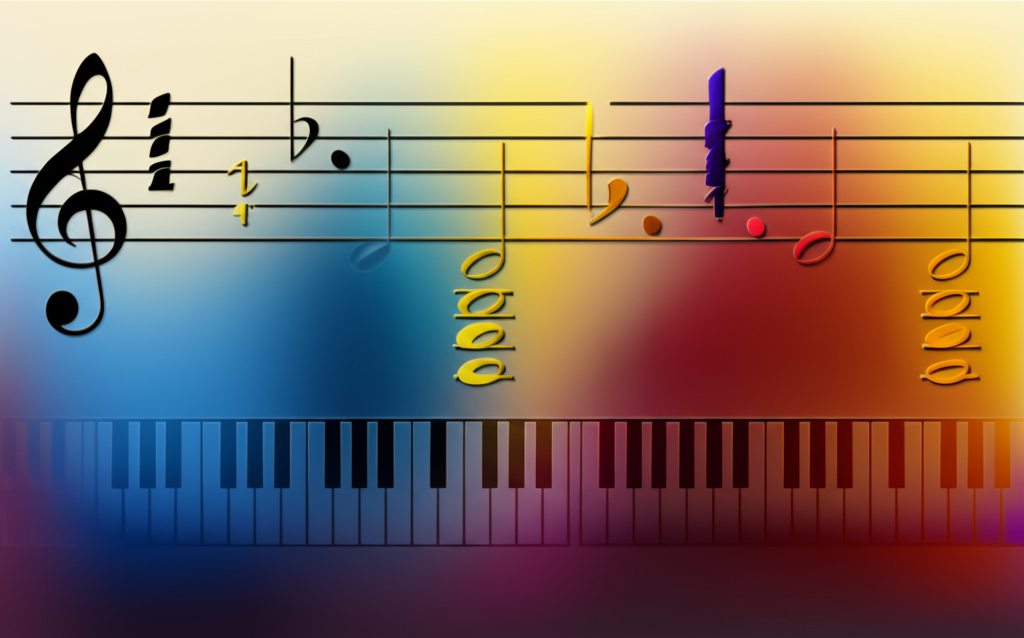Summary:
The I-IV-V-I chord progression is arguably the most important harmonic sequence in Western music. This powerful and versatile progression serves as the structural backbone for countless songs in genres ranging from classical and blues to rock and pop. For any musician, composer, or serious music listener, understanding the function and feel of I-IV-V-I is a fundamental step toward musical fluency.
Keywords:
chord progression, functional harmony, tonic, subdominant, dominant, cadence, music theory, I-IV-V-I, V7 chord, popular music, western harmony, songwriting
What is the I-IV-V-I Progression?
The I-IV-V-I progression is a sequence of four chords built on the first (I), fourth (IV), and fifth (V) degrees of a musical scale. These Roman numerals represent the chords' function within a key. This progression tells a complete musical story: it starts at home (stability), moves away (departure), builds anticipation (tension), and finally returns home (resolution). This satisfying journey is deeply ingrained in our musical culture.
The Function of Each Chord
In functional harmony, each chord has a specific role. The I-IV-V-I progression is the perfect demonstration of this concept:
- I (Tonic): The "home" chord. It's built on the first note of the scale and provides a sense of rest and stability. All harmonic tension ultimately seeks to resolve back to the tonic.
- IV (Subdominant): The "departure" chord. Built on the fourth scale degree, it creates gentle movement away from the tonic without generating significant tension. It functions as a predominant chord, preparing the ear for the dominant.
- V (Dominant): The "tension" chord. Built on the fifth scale degree, its primary job is to create strong harmonic tension that pulls powerfully back towards the tonic (I). This pull is what drives the music forward.
- I (Tonic): The "return." Coming back to the tonic chord provides a sense of closure and satisfaction, completing the harmonic phrase. This movement from V to I is called an authentic cadence.
Pro-Tip: The Power of the V7 Chord
To increase the tension and pull of the V chord, composers often add a seventh to it, creating a dominant 7th chord (V7). In the key of C major, the V chord is G major (G-B-D). The V7 chord is G7 (G-B-D-F). The addition of the F creates a dissonant interval called a tritone with the B, which makes the resolution to the C major chord even more satisfying.
I-IV-V-I in Common Keys
Here is how the progression looks in several common major and minor keys. Notice in minor keys, the progression is written in lowercase (i-iv-V-i), and the V chord is typically major to create a stronger pull to the minor tonic.
| Key | I / i | IV / iv | V | I / i |
|---|---|---|---|---|
| C Major | C Major | F Major | G Major (or G7) | C Major |
| G Major | G Major | C Major | D Major (or D7) | G Major |
| D Major | D Major | G Major | A Major (or A7) | D Major |
| A Minor | A Minor | D Minor | E Major (or E7) | A Minor |
Example 1: I-IV-V-I in C Major
A basic I-IV-V-I progression in C major (C - F - G - C), with each chord played as a whole note.

Example 2: I-IV-V-I in G Major
The same progression in G major (G - C - D - G) . Note the F# in the D major chord, which is the leading tone of the G major scale.

Example 3: i-iv-V-i in A Minor
Here is the progression in a minor key (A minor - D minor - E Major - A minor) . The V chord (E) is major because its third (G#) is raised. This G# is the "leading tone" that creates a powerful pull back to the tonic note A.

Common Variations
While I-IV-V-I is a complete unit, its components are often rearranged to create different emotional effects:
- I-V-IV-I: A common rearrangement in folk and country, creating a slightly different contour.
- I-IV-V (no final I) : The core of the 12-bar blues. It often repeats, with the final resolution to I being delayed until the end of a larger section.
- I-IV-I-V: A popular pattern in hymns and folk tunes, often used to set two lines of lyrics before a final resolution.
How to Practice This Progression
Internalizing the sound and feel of I-IV-V-I is a superpower for any musician. Here’s how to do it:
- Play it in all 12 keys: Start with the keys you know and gradually work your way through the circle of fifths. This builds instrumental facility and deepens your theoretical knowledge.
- Sing the roots: Play the chords on a piano or guitar and sing the root note of each chord (e.g., in C, sing "C... F... G... C..."). This connects the harmony to your ear.
- Improvise over it: Record yourself playing the progression and then practice improvising melodies using the notes of the parent scale.
- Listen for it: Actively listen for the I-IV-V-I progression in the music you hear every day. You'll be amazed at how often it appears!
Historical Context and Examples in Popular Music
The I-IV-V relationship was codified during the common practice period of classical music (approx. 1650-1900), forming the basis of sonata form and the harmonic language of composers like Mozart and Beethoven.
In the 20th century, the progression became the DNA of the blues. The 12-bar blues structure is built entirely around the I, IV, and V chords. This influence carried directly into rock and roll, where it became the default harmonic blueprint.
Countless hit songs are built on this progression:
- Rock/Pop: "La Bamba" by Ritchie Valens, "Twist and Shout" by The Beatles, "Wild Thing" by The Troggs, "Good Riddance (Time of Your Life)" by Green Day (uses a G-C-D progression, which is I-IV-V in the key of G).
- Blues: Nearly every traditional blues song uses a I-IV-V framework, from Robert Johnson to B.B. King.
- Folk: "This Land Is Your Land" by Woody Guthrie, "Down in the Valley."
- Country: "Your Cheatin' Heart" by Hank Williams, "I Walk the Line" by Johnny Cash (though it famously modulates keys).
Fun Facts
- The simple piano duet "Heart and Soul" is built on a repeating I-vi-IV-V progression, which is a close cousin to I-IV-V-I.
- In blues, country, and rock, the V chord is almost always played as a dominant 7th (V7) to maximize its resolving power. The I and IV chords are also frequently played as 7th chords (I7, IV7) in the blues.
- The comedy group Axis of Awesome's viral "Four Chords" song demonstrates how the I-V-vi-IV progression (using three of the same chords but in a different order) is the basis for dozens of modern pop hits. This shows how rearranging these fundamental chords creates entirely new emotional arcs.
- In Nashville, this progression is so common that session musicians simply refer to it by its numbers. A bandleader might just call out "One-four-five in A," and the whole band will know exactly what to play.
Conclusion: The Journey of Harmony
The I-IV-V-I progression is more than just a sequence of chords; it's a fundamental narrative device in music. It mirrors the universal pattern of stability, departure, and return that resonates with the human experience. It establishes a home base (I), creates a journey (IV), builds suspense (V), and brings us back for a satisfying conclusion (I).
While music has evolved to include far more complex harmonies, the elegant power of I-IV-V-I remains undiminished. Mastering this progression is a rite of passage for any musician, providing a key that unlocks the harmonic structure of thousands of songs and a solid foundation for a lifetime of musical exploration.
References:
Tagg, P. (2014). Everyday Tonality II: Towards a Tonal Theory of What Most People Hear. The Mass Media Music Scholars' Press.
Temperley, D. (2018). The Musical Language of Rock. Oxford University Press.
Levine, M. (1995). The Jazz Theory Book. Sher Music Co.
Moore, A. F. (2001). Rock: The Primary Text: Developing a Musicology of Rock. Ashgate Publishing.
Everett, W. (2008). The Foundations of Rock: From "Blue Suede Shoes" to "Suite: Judy Blue Eyes". Oxford University Press.
